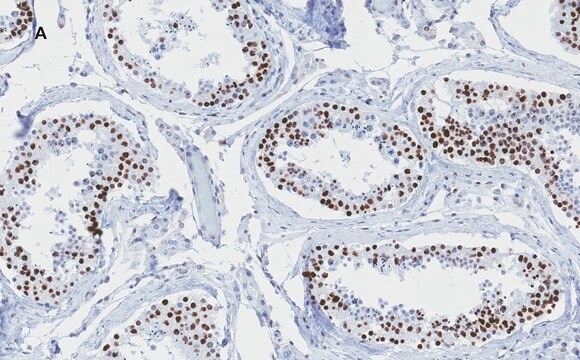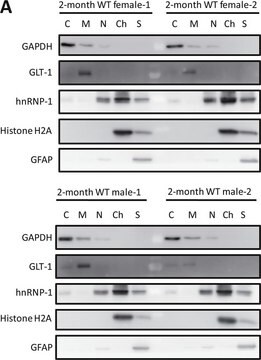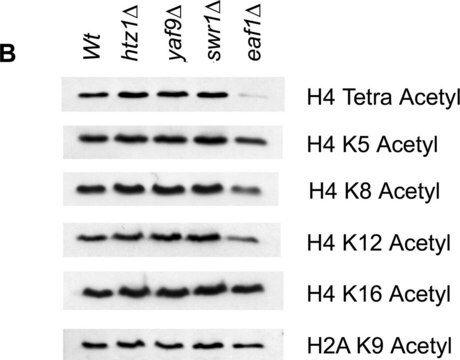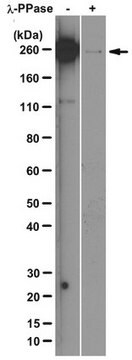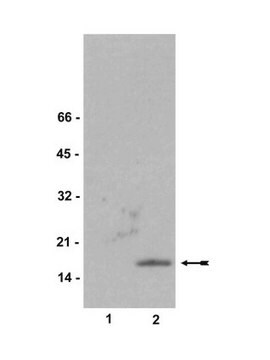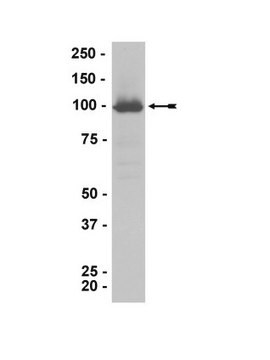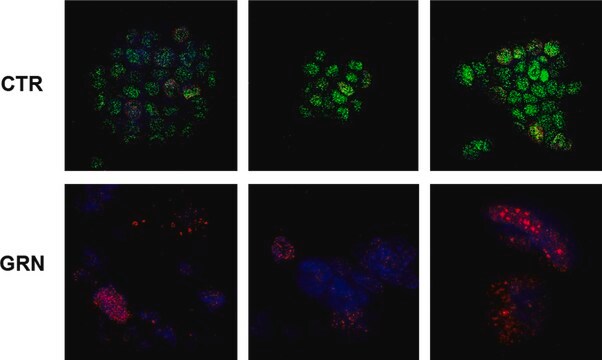07-745-I
Anti-phospho Histone H2A (Ser129) Antibody
from rabbit, purified by affinity chromatography
Synonym(s):
Histone H2A.1
About This Item
Recommended Products
biological source
rabbit
Quality Level
antibody form
affinity isolated antibody
antibody product type
primary antibodies
clone
polyclonal
purified by
affinity chromatography
species reactivity
yeast
technique(s)
dot blot: suitable
immunocytochemistry: suitable
immunoprecipitation (IP): suitable
inhibition assay: suitable (peptide)
western blot: suitable
NCBI accession no.
UniProt accession no.
shipped in
wet ice
target post-translational modification
phosphorylation (pSer129)
Gene Information
Saccharomyces cerevisiae ... Hta1(851811)
General description
Specificity
Immunogen
Application
Immunoprecipitation Analysis: A 1:100 dilution from a represenetative lot immunoprecipitated phospho Histone H2A (Ser129) from yeast extracts.
Immunohistochemistry Analysis: A 1:1,000 dilution from a lot detected phospho Histone H2A (Ser129) from yeast cells.
Epigenetics & Nuclear Function
Histones
Quality
Western Blotting Analysis: 0.02 µg/mL of this antibody detected an increase in signal for phospho Histone H2A (Ser129) in MMS treated yeast nuclear extract over untreated yeast nuclear extract.
Target description
Physical form
Storage and Stability
Other Notes
Disclaimer
Not finding the right product?
Try our Product Selector Tool.
Storage Class Code
12 - Non Combustible Liquids
WGK
WGK 1
Flash Point(F)
Not applicable
Flash Point(C)
Not applicable
Regulatory Listings
Regulatory Listings are mainly provided for chemical products. Only limited information can be provided here for non-chemical products. No entry means none of the components are listed. It is the user’s obligation to ensure the safe and legal use of the product.
JAN Code
07-745-I:
Certificates of Analysis (COA)
Search for Certificates of Analysis (COA) by entering the products Lot/Batch Number. Lot and Batch Numbers can be found on a product’s label following the words ‘Lot’ or ‘Batch’.
Already Own This Product?
Find documentation for the products that you have recently purchased in the Document Library.
Our team of scientists has experience in all areas of research including Life Science, Material Science, Chemical Synthesis, Chromatography, Analytical and many others.
Contact Technical Service